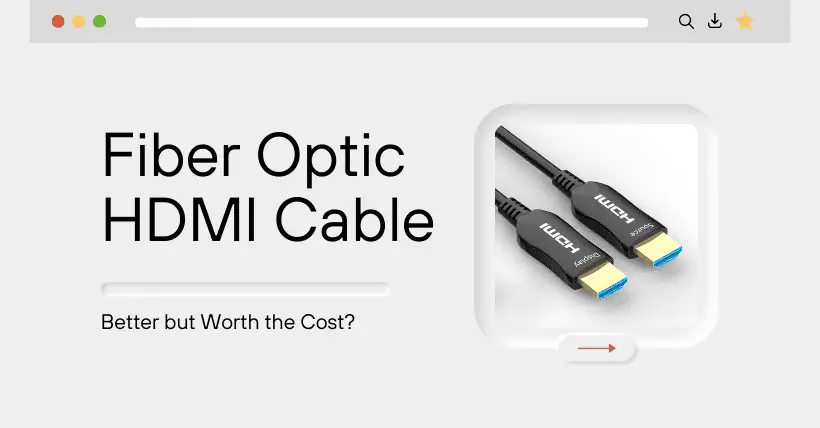HDMI cables don’t need much introduction as we’ve already discussed their functions, features, and version advancements extensively. This time, however, we want to explore the structure of different HDMI cables. In other words, with the same version, is it necessary to invest more in buying the currently more expensive fiber optic HDMI cables? From our perspective, this is an interesting question, not about mysticism but addressing many people’s doubts.
For a long time, regardless of the HDMI version, there have been only two types of structures: copper cables and fiber optic cables. Most HDMI cables we buy are copper cables simply because they are cheaper than fiber optics. However, with technological progress and the demand for high-quality long-distance signal transmission (especially for projectors), fiber optic HDMI cables are becoming increasingly popular. For users, the question is whether it is necessary to buy fiber optic HDMI cables since both copper and fiber optic cables can provide high-quality audio and video.
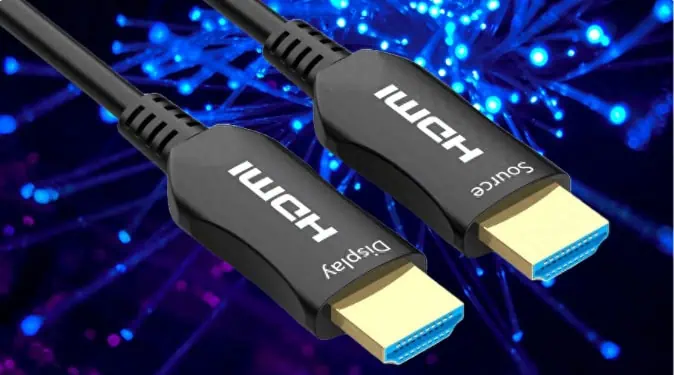
Based on our limited knowledge, fiber optic cables are indeed more suitable for long-distance transmission, but for short distances, they seem unnecessary. Of course, if you want to ensure the stability of your HDMI signal transmission and consider future possibilities, purchasing a fiber optic HDMI cable seems worthwhile. But it’s important to note that fiber optic HDMI cables do not enhance image quality; their main advantage lies in ensuring image stability over long distances.
01
Working Principle of Fiber Optic HDMI
Similar to the fiber used in broadband installation, fiber optic HDMI cables utilize thin glass strands and light pulses to transmit signals, typically generated by low-power laser emitters. The principle of fiber optic HDMI cables is to use light and the reflection and refraction within the glass strands to transmit data, which is significantly different from copper cables that use electrical pulses.
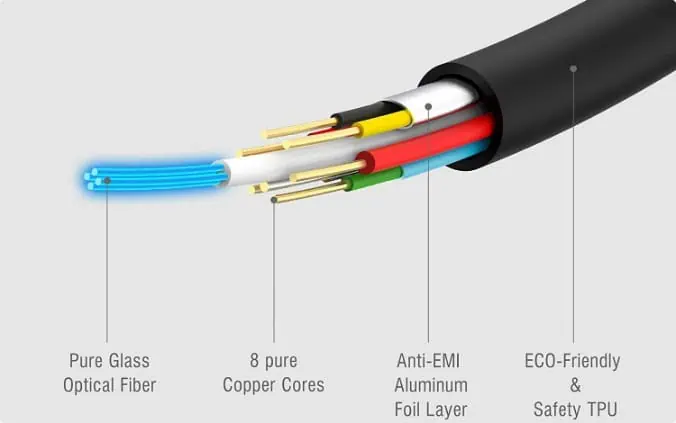
However, many people notice that even fiber optic HDMI cables are wrapped with copper wire. Why is that? When transmitting data, the source device converts audio and video signals into a series of light pulses guided into the glass strands. The copper wire around the glass strands helps with certain data transmissions, such as low-speed data, but mainly functions for non-signal tasks and handshake functions with display devices.
The key to fiber optic HDMI transmission is internal reflection. When light passes through the fiber core, it reaches the boundary between the core and the surrounding cladding, which has a lower refractive index. This effectively traps the light within the core through continuous reflection at the core-cladding interface. This method minimizes signal loss during transmission, allowing the light pulses to reach the target device, where they are converted back into the original audio and video signals. This principle ensures more stable transmission over longer distances compared to ordinary copper cables.
02
Advantages and Disadvantages of Fiber Optic HDMI Cables
The pros and cons of fiber optic HDMI cables are clear. When used properly or in the right environment, their benefits are significant. The primary advantage is the longer transmission distance; fiber optic HDMI cables can transmit up to 100 meters without any signal loss or attenuation, whereas ordinary HDMI cables are limited to 15 meters and may require signal boosters or repeaters beyond that. Some HDMI 2.1 cables made of copper may become unstable if they exceed a certain length, but fiber optic HDMI cables do not have this problem.
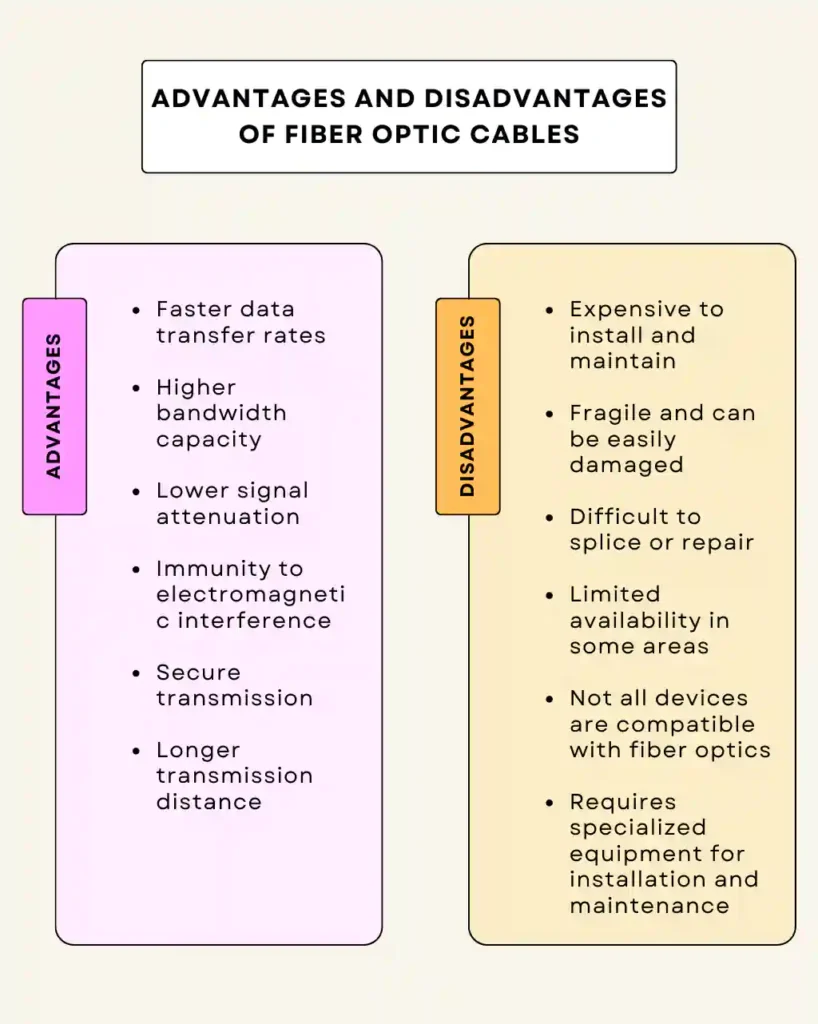
Another advantage is their excellent resistance to electromagnetic interference (EMI) and radio frequency interference (RFI), issues that copper cables face, especially over long distances. Additionally, fiber optic cables are more flexible and convenient to install due to their thinness, making them easier to handle with no significant counterforce.
The drawbacks include the fragility of fiber optics compared to copper cables; excessive bending or force can damage the fibers, causing signal loss or failure. Cost is another factor; fiber optic HDMI cables are indeed more expensive than ordinary HDMI cables, particularly for longer lengths, though this cost difference is narrowing. Fiber optic HDMI is also directional, meaning the input and output ends are fixed, unlike ordinary HDMI cables that can be plugged in either way. However, fiber optic HDMI cables come with marked input and output ends.
03
Price of Fiber Optic HDMI
The price of fiber optic HDMI cables, like ordinary HDMI cables, is influenced by length—the longer the cable, the more expensive it is. In China, even a non-premium 3-meter fiber optic HDMI 2.1 cable costs over 100 RMB, more than five times the price of an ordinary HDMI 2.1 cable. A 10-meter cable usually exceeds 300 RMB, and the price can be higher with certifications. Generally, don’t expect to find a high-quality fiber optic HDMI cable at a very low price.
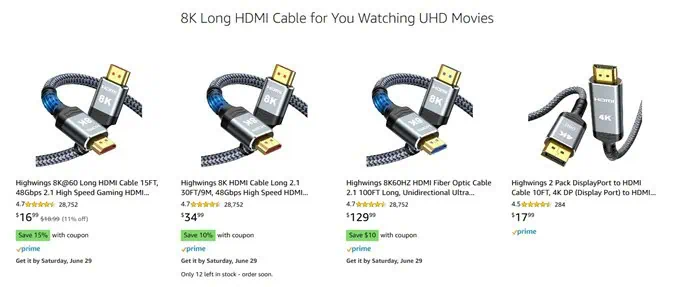
Various brands, both domestic and international, offer fiber optic HDMI cables, such as BiYaz, Philips, Fibbr, and Kaiboer. Personally, I use a relatively low-end Fibbr fiber optic HDMI 2.1 cable and have had no issues for a long time. More expensive options like high-end cables from Kaiboer and Fibbr, or audiophile brands like Monster and JIB, might offer better shielding but aren’t strictly necessary.
04
Conclusion
Whether to buy a fiber optic HDMI cable depends on the distance and requirements of your equipment connections. Most of the time, or within 5 meters, an ordinary copper HDMI cable is sufficient without needing a fiber optic cable. Even if you require high image quality and functionality such as Dolby Atmos, Dolby Vision, 8K, or HDR, fiber optic HDMI 2.1 cables are not a necessity.
If you need to connect over a long distance, fiber optic HDMI cables become essential. Personally, I think they are worth considering for distances over 5 meters, and definitely for over 10 meters, while for distances over 15 meters, fiber optic cables are a must. Within 10 meters, ordinary HDMI cables offer better cost-effectiveness than fiber optic HDMI cables.
Related:
- Discover: Global First in Untraceable Fiber Optic Assaults
- HDMI or DisplayPort? Ultimate Comparison Guide

Disclaimer: This article is created by the original author. The content of the article represents their personal opinions. Our reposting is for sharing and discussion purposes only and does not imply our endorsement or agreement. If you have any objections, please get in touch with us through the provided channels.

